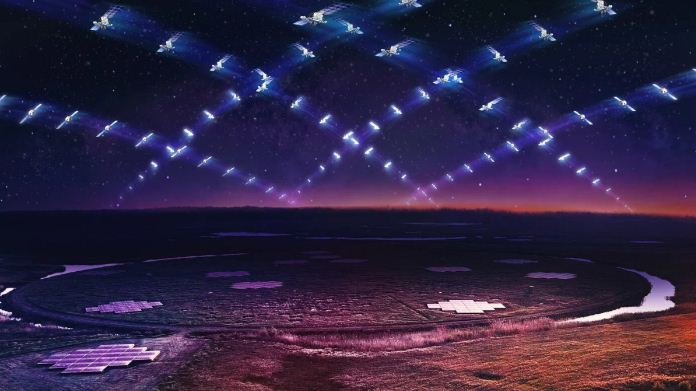Mega constellations like Starlink are a concern for scientists. They increase the risk of space debris and make it harder to observe the sky. This has been confirmed by a recent scientific study.
Please follow us on Facebook and Twitter.
When the US space company SpaceX launched the first satellites for the Starlink internet service, there were complaints because the satellites appeared as bright dots in the sky. In response, SpaceX added sunshades to the satellites to reduce reflections.

However, Starlink satellites do not only emit visible light; they also release low-frequency radio waves that can interfere with astronomical observations, as revealed last year.
The Problem Has Worsened
The second generation of Starlink satellites is now in orbit, and the issue has become more serious. The V2 mini satellites emit up to 32 times more electromagnetic leakage radiation (Unintended Electromagnetic Radiation, UEMR) than the first generation. This could blind radio telescopes and hinder astronomical research, according to the Dutch Institute for Radio Astronomy (Astron).
Astron monitored the satellites using the Low Frequency Array (Lofar), which is made up of many radio telescopes that combine their signals into one. Lofar consists of about 20,000 radio antennas spread across 52 locations in Europe. Using this telescope, astronomers recently discovered a jet of energy that spans 23 million light-years.
On July 19, 2024, researchers searched the sky twice for one hour each, looking for radio frequencies in the ranges of 10 to 88 MHz and 110 to 188 MHz. The team found Unintended Electromagnetic Radiation (UEMR) in almost all of the Starlink satellites they observed, covering both the first and second generations. The second generation emitted such high levels of UEMR that it might surpass internationally set limits for interference, according to the team led by Cees Bassa, as detailed in the journal Astronomy & Astrophysics.
Satellites Shine Brighter Than Stars
” In comparison to the faintest astrophysical sources detected by Lofar, the UEMR from Starlink satellites is 10 million times more intense. This difference is akin to comparing the dimmest stars visible to the naked eye with the brightness of the full moon.” Bassa said. The issue is made worse by the fact that SpaceX is launching about 40 new second-generation Starlink satellites into orbit each week.
The results indicate that stricter regulations on accidental radiation from satellites are needed to ensure ongoing radio astronomy observations. “Satellite companies have no interest in generating this accidental radiation, so minimizing it should be a priority in their sustainable space policy,” said Federico Di Vruno, who contributed to the study. He emphasized that Starlink is not the only company launching large numbers of satellites into low orbit.
The consequences of interference from satellites are becoming increasingly evident, according to the researchers. They are calling for cooperation among satellite companies, regulators, and the astronomy community to address this issue.




